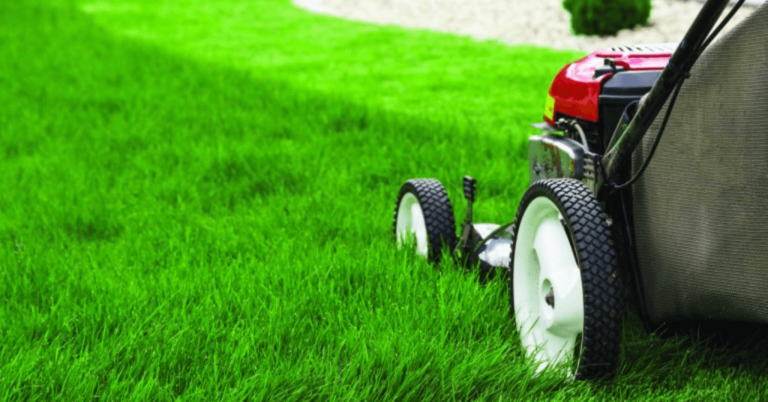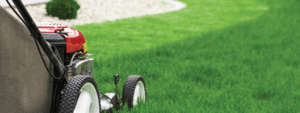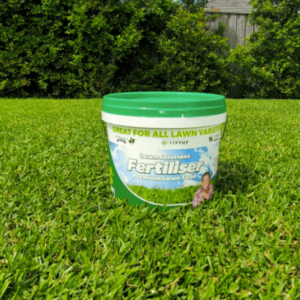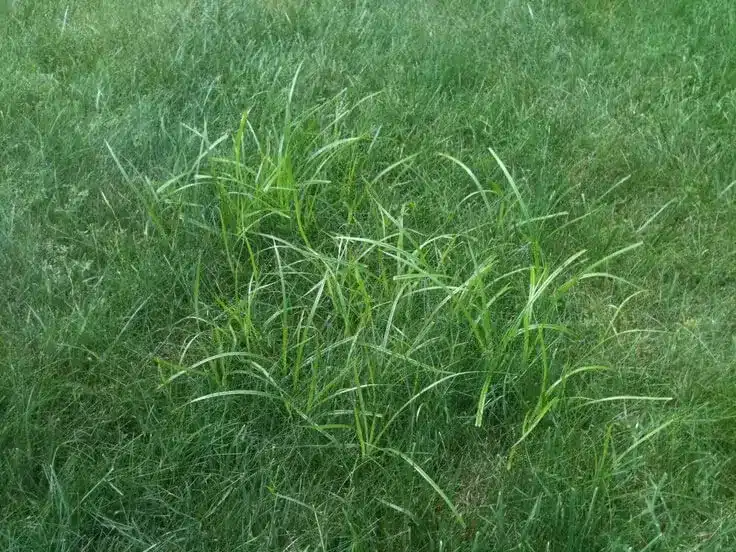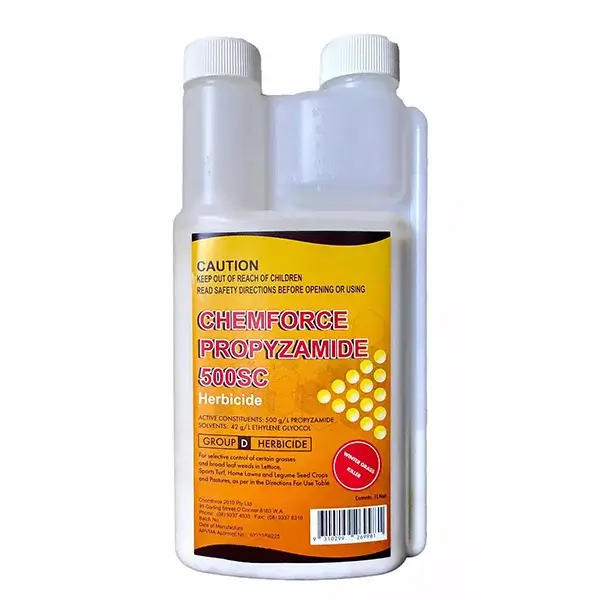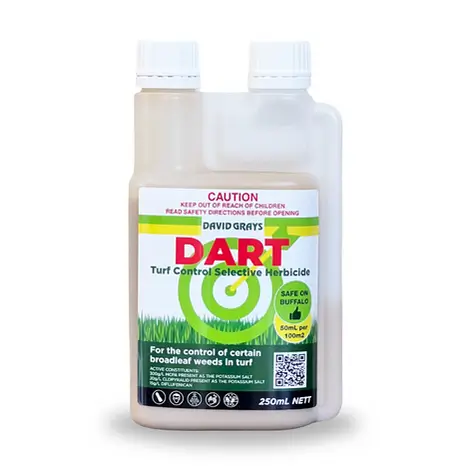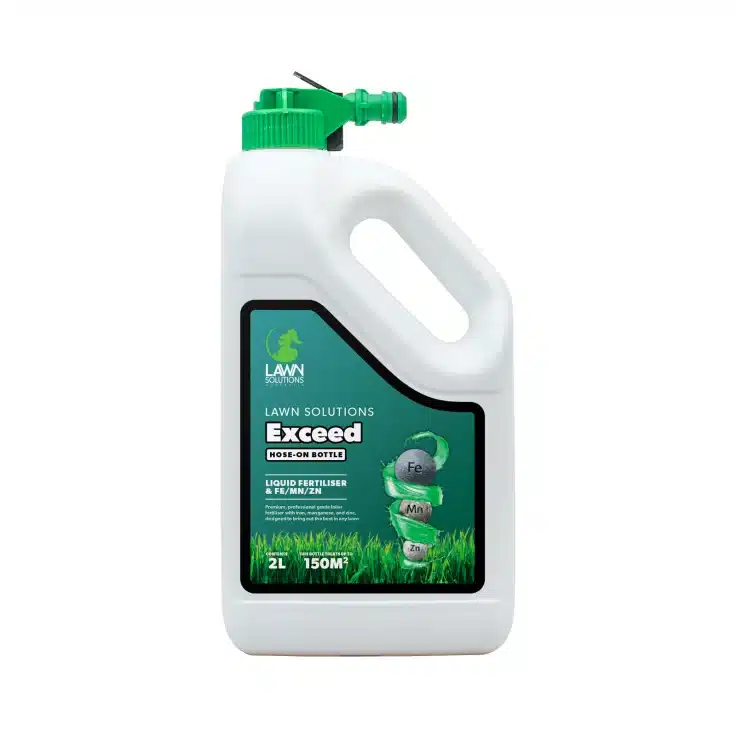What is the best mowing height for your lawn?
This is undoubtedly the million dollar, and often polarising, question in the great lawn mowing debate!
The short answer is: it depends.
Firstly, it depends on what type of lawn you have (e.g. if you have a couch lawn - mow it low. If you have a Sir Walter DNA Certified Buffalo lawn - mow it a little higher and leave it lush to take advantage of the soft, velvety leaf blade it is famous for).
Secondly, it depends on the time of year. As we are currently heading into winter, you'll want to pop your mower blade up one notch, or if you are de-thatching your lawn at the start of spring as part of your annual maintenance program, you'll pop your mowing height down two or three notches.
And thirdly, your ideal lawn mowing height might just depend on your personal preference! But one thing is for sure, many a good husband and wife argument has started over mowing heights! She wants it long and looking like a luxurious rug... but he wants it mown right down on the lowest setting, so it looks like a bowling green or a professional pitch to maximise the ball bounce in backyard cricket!
Discovering the perfect mowing height is what we call the lawn lovers sweet spot.
6 Top Tips on How to Mow Your Lawn
Tip #1 - Mow at the right height for your grass type
The recommended height for mowing your lawn depends on your grass variety, season and localised growing conditions. Below is a rough guide for the correct mowing heights for the most popular lawn varieties grown in Victoria. But in short, a general rule of thumb for mowing heights is shorter in summer and longer in winter... and slightly longer in shaded areas all year round.
Specifically, we would recommend the following heights:
| Turf Type | Mowing Height |
|---|---|
| Nullarbor Couch | 5mm to 30mm |
| Sir Walter Buffalo Grass | 30mm to 50mm |
| Kikuyu (Eureka Premium VG) | 25mm to 50mm |
| Zoysia Matrella (Sir Grange) | 5mm to Unmown |
| Hybrid Bermuda (TifTuf) | 5mm to 30mm |
For more information on why height matters, check out this helpful video below by our friends at Lawn Solutions Australia.
Tip #2: Don’t mow your lawn too short
If you mow your lawn too short, it will put it under extreme stress. Stress can leave brown or bare looking patches in your lawn, and if cut too short regularly, can seriously deplete your lawn’s energy reserves, allowing weeds to invade and seed.
Tip #3: Reduce mowing height gradually
If your lawn is overgrown, gradually reduce it to the correct or desired height over a few mows. Avoid taking too much off the leaf blade in one go as this can stress the grass and it may require additional irrigation to help it recover. For best results, take no more than one-third of the blade length at each mow.
Tip #4: Mow your lawn regularly
If you learn nothing else from this blog today - take this away: MOWING FREQUENCY is actually one of the most important keys to ensuring you will always have the best looking lawn in the street!
Mowing regularly will help suppress your lawn's upright growth habit and stimulate essential lateral growth to enhance its density, which means not only will your lawn feel amazing to walk and play on, but it will also look super healthy and have fewer weeds. A well mown lawn with superior density is also a quick and easy way to minimise unwanted weed invasion moving into the cooler months. This time of year, all of our watersmart, environmentally friendly lawns are heading into a dormancy period of slow or no growth, which means no watering or mowing for the next three months - hooray!
Pesky winter weeds are about to become super active and while your lawn is in 'lockdown' for the winter, it is not uncommon for broadleaf weeds, clover or winter grasses (to name a few) to pop up through a winter dormant lawn. And this is why it is so important lawns are irrigated and mown frequently to nurse them through the summer months and are fertilised or had an application of a pre-emergent during Autumn to help minimise winter weed issues.
In summary, regular mowing is best so try and avoid long periods between mows, except for the winter dormancy period of course.
Keep in mind that your mowing routine will to change with the seasons. Sir Walter DNA Certified, for example, loves hot summers and will have vigorous growth during this time, but with our Victorian winter already on the doorstep, you might notice your lawn's growth has already starting to slow.
Tip #5: Keep your lawn mower blades sharp
Blunt blades tend to tear, rather than cut the lawn, so make sure you keep your mower blades sharp for a beautiful cut and schedule to have your blades sharpened professionally on a seasonal basis or learn how to service and replace yourself via this helpful Lawn Solutions Australia blog.
Tip #6: Don’t mow a wet lawn
Make sure your lawn is dry if you’re planning to mow and although rain is a great lawn fertiliser, it’s not ideal for mowing.
If you mow when it's wet, the leaf blades will be damaged from tearing and not being clean cut, leaving an uneven edge. Your lawn will appear chopped if this occurs, so we suggest you wait until it dries out before mowing.
Mowing Tips to Achieve The Best-Looking Lawn in The Street
1) Which way should I mow?
While there are no hard and fast rules when it comes to which way to mow, changing it up and mowing in different directions can contribute to a healthy lawn by encouraging individual blades to grow straight, providing space and promoting growth. Changing it up will also promote greater density, promoting a healthy luscious, weed-free lawn area. And if you’ve ever wondered how some clever folk have immaculate looking strips in their lawn - like you might see at the iconic Melbourne Cricket Ground - it’s all about alternating mowing direction!
2) What sort of mower should I use?
There are many types of lawn mowers available, including:
- Rotary
- Cylinder
- Ride-on mowers
- Robotic auto-mowers
Rotary mowers come in two types, mulching or catching. Mulching mowers mulch the grass clippings and deposit them over your lawn. These are good for lawns in poor condition or on poor soils. Catcher mowers catch the clippings for discarding or composting.
Petrol powered rotary mowers are powerful, affordable and easy to use and suit most lawn types.
Electric rotary mowers are generally cheaper than petrol mowers and require less maintenance, however they can be less powerful, and the cord can get in the way. Battery operated models are improving and can be a great alternative to the traditional petrol models.
Cylinder mowers are extremely popular with lawn enthusiasts. They are excellent for short, fine lawns varieties and can provide a manicured look to your lawn. If you have a very small area, a hand pushed cylinder mower can be a good option.
Robotic Auto-Mowers are becoming an affordable and popular option for smaller and larger yards and are an amazing example of our high-tech modern world. They are GPS operated, and can be managed by phones off site. They are also an easy option to ensure you reap the benefits of frequent mowing. For more information visit the Husqvarna website for the full low down.
Still confused?
In summary, the bulk of the population have a standard rotary push lawn mower in their shed or garage for front and backyard mowing at home. One with spinning blades rotating on a vertical axis under a cutting deck, that can be adjusted up or down depending on the height needed.
But if you've had a rotary mower for years and you're in the market for an upgrade here's what you need to know about the alternatives:
A reel-based mowing system (aka a cylinder mower) is a good option, which has blades that cut your grass on a horizontal axis.
There are two main types of reel mowers:
- Push reel mowers require a little extra grunt as you need to 'push' it manually, without any additional form of power for propulsion. Reel mowers can have anywhere from five to 12 exposed blades and the more blades, the better the cut. Also, this cutting action works best on a low or short cut and will not be able to cut long grass. This will mean more frequent mowing, as many as 2-3 times a week during the growing season to ensure a good clean cut.
- Battery or petrol-powered reel mowers have a similar set up when it comes to the cutting mechanism, but the reel itself is powered by a petrol or battery powered motor.
The verdict:
With the reel option, particularly cylinder mowers, you'll get a better quality cut due to the slicing ‘scissor’ action, which is superior to the chopping action of a rotary mower.
However, a rotary mower with sharp blades and decent power will provide a good enough cut and offers more versatility over large lawns. The rotary option is generally more common, however if you enjoy regular mowing and a fine cut well-manicured lawn, a cylinder mower would be a good option.
We know and understand how high the neighbourhood stakes are for the best looking lawn in the street title - pride will make people do all sorts of things!
Good luck and happy mowing ... and remember to wait until your lawn dries out after any rain!

